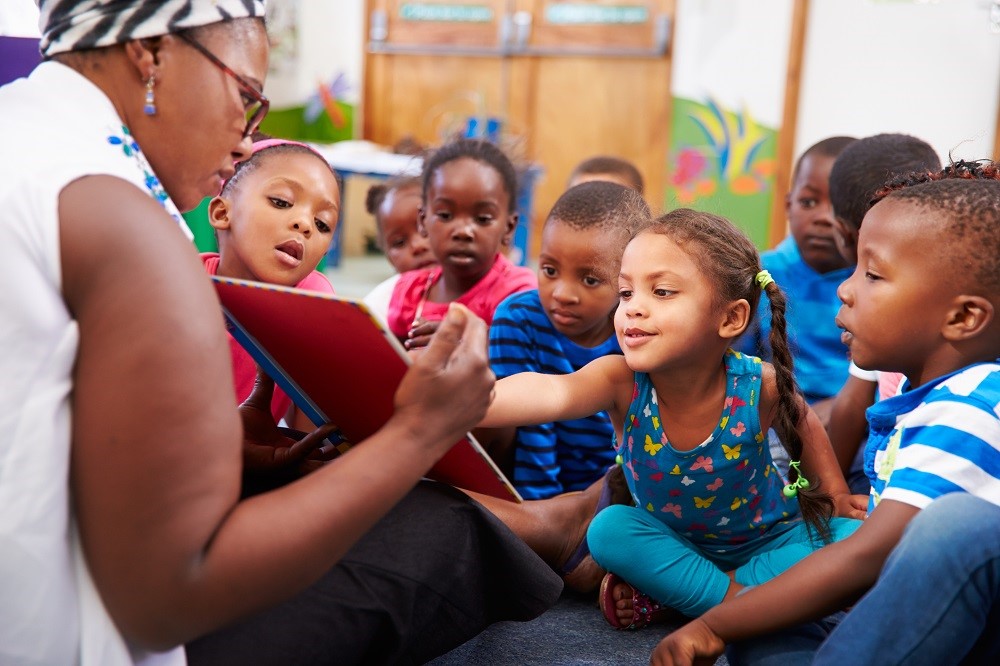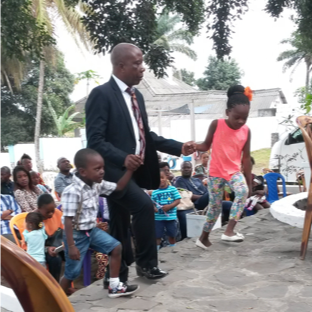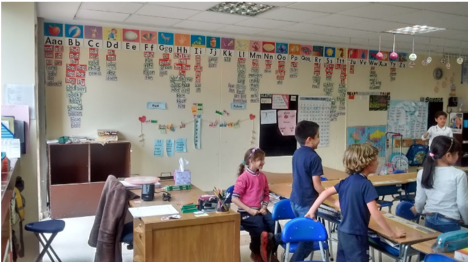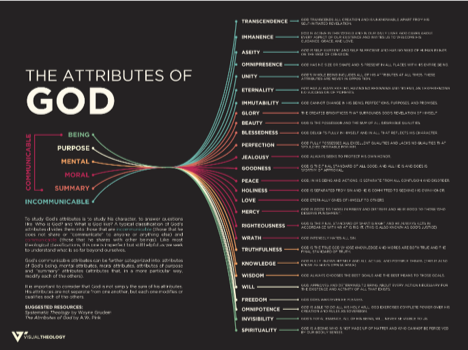Exit slips: your ticket to closure
 Have you ever found yourself rushing through the last bit of lecture so that you can finish up before the bell rings? Calling out homework assignments as students trickle out the door? Ending in the middle of an activity because the specials teacher is waiting? If you are like most teachers, the answer to these questions is probably a resounding yes.
Have you ever found yourself rushing through the last bit of lecture so that you can finish up before the bell rings? Calling out homework assignments as students trickle out the door? Ending in the middle of an activity because the specials teacher is waiting? If you are like most teachers, the answer to these questions is probably a resounding yes.
We all know that bringing closure to a lesson is important. In an ideal world, we would always deliver perfectly paced lessons. Unfortunately, knowing something and actually doing it are two totally different things. Since we aren’t living in an ideal world, and since the pacing of even our most well-planned lessons can be so easily interrupted what can we do?
One thought is to introduce exit slips into our classes. Exit slips allow teachers the flexibility to bring closure to a lesson at any point—a helpful tool for those days when the time has got away from you. They can be distributed (or written on the board) the last 3-5 minutes of class, and collected as students leave the room.
Here are some ways that exit slips can be used:
Consolidating Learning:
• Solve a sample problem
• What you would tell a friend who was absent about class today? What would he need to know?
• Provide a cloze statement for students to complete. [ie: Apostrophes are _______________ marks used to indicate ______________ (as in Hui’s ball) and _______________ (such as can’t or didn’t).]
• Rank what you learned in order of importance.
• Write a tweet about what you learned (140 characters or less).
• List 5 key words (vocabulary) you need to understand what we learned today.
Formative Assessment/Checking for Understanding:
(Some of these can be useful for those days when you have to stop mid-instruction as they encourage students to think ahead and connect to the next day’s learning.)
• Write one question you still have
• Finish the statement: I’m still wondering about…
• What two questions would you think must be included on a quiz over today’s lesson?
• Give an example of what we learned today (ie: write three words that start with a hard c sound.)
• What concept do you need more examples of to really feel like you’ve learned?
• Draw a diagram/illustration of what you learned today.
Connect to Prior Knowledge:
• Finish the statement: I used to think… b/c… but now I think… b/c…
• How did today’s lesson connect to yesterday’s topic?
• What connections can you make with other lessons? With real life? with other subjects?
Activate Critical Thinking Skills:
• Finish the statement: One concept that has been dif ficult or confusing in this chapter is… b/c… but I overcame my challenge by…
ficult or confusing in this chapter is… b/c… but I overcame my challenge by…
• What did I learn today (not what was the lesson about)?
• How could today’s lesson be applied in the “real” world?
• What are you thinking about after today’s lesson?
• What mistakes did you make today? What did you learn from them?
• Make a statement about the lesson and ask students to respond to that statement in writing. (ie: Global warming is something that all citizens of the world should be concerned about. Based on today’s lesson write 1-2 sentences telling if you agree or disagree and why?)
Evaluate the Effectiveness of Instruction (Metacognition):
• What did the teacher do to help you learn today?
• What would have helped you to learn the material better?
• How effective was __x__ activity in helping you learn the material?
• Name one positive and one negative thing that happened during discussion time in class today.
• How well do you think you understood today’s lesson:
Exit slips are not formal assessments. Instead, they are snapshots of student learning at a given point in time. They are not to be graded, but do need to be reviewed as a way to inform teaching strategies. Exit slips should take very little time to complete (3-5 minutes). They help students reflect on their learning and transition between lessons. Not only do they bring closure, they equip teachers to better tailor instruction to the real needs of students.
If you’ve never used exit slips before, why don’t you give them a try in 2019. And for those of you who are really adventurous, consider adding technology to the mix. Bringing closure to your class has never been this easy!
Becky Hunsberger, M.Ed.
Teacher Education Services
TeachBeyond Global
Photo Credits: School’s Out. Classroom Matters, via Shutterstock. Students Writing. via Shutterstock.



 All of us can improve both our memory and our ability to transfer knowledge to unfamiliar situations with active effort. The most effective learning takes place when students are faced with desirable difficulty—a learning task that requires effort at a level slightly beyond the expected level for students.[2] Unfortunately, this effort is hard and most of us don’t naturally choose to do things the hard way. In fact, in their research, Brown, et al., discovered that most people revert to study patterns that require less effort even after experiencing greater learning using more difficult study techniques.[3] As fallen people, we want to believe that we can somehow get something for nothing—or as close to nothing as possible. We want to abandon our calling to cultivate in favour of an easier path.
All of us can improve both our memory and our ability to transfer knowledge to unfamiliar situations with active effort. The most effective learning takes place when students are faced with desirable difficulty—a learning task that requires effort at a level slightly beyond the expected level for students.[2] Unfortunately, this effort is hard and most of us don’t naturally choose to do things the hard way. In fact, in their research, Brown, et al., discovered that most people revert to study patterns that require less effort even after experiencing greater learning using more difficult study techniques.[3] As fallen people, we want to believe that we can somehow get something for nothing—or as close to nothing as possible. We want to abandon our calling to cultivate in favour of an easier path. I’ve found that the hardest part for me in designing this type of learning activity is getting myself out of the way. My tendency is to want to jump in and direct the students, to help them discover the answer. I want to prevent them from taking wrong turns or making common mistakes. Unfortunately, when I do this, I am unwittingly preventing my students from doing the work of thinking themselves. I am hindering, rather than empowering, learning.
I’ve found that the hardest part for me in designing this type of learning activity is getting myself out of the way. My tendency is to want to jump in and direct the students, to help them discover the answer. I want to prevent them from taking wrong turns or making common mistakes. Unfortunately, when I do this, I am unwittingly preventing my students from doing the work of thinking themselves. I am hindering, rather than empowering, learning.
 As teachers, we should help students see needs of those who can’t help themselves. Perhaps this is as simple as a daily look at the “news.” Maybe it is choosing books that expose students to the struggles of others. However we choose to do this, we may have to break out of our comfortable routines to help students see and care about justice.
As teachers, we should help students see needs of those who can’t help themselves. Perhaps this is as simple as a daily look at the “news.” Maybe it is choosing books that expose students to the struggles of others. However we choose to do this, we may have to break out of our comfortable routines to help students see and care about justice. As teachers, we can build activities into our curriculum where students can practice justice. Consider picking a project and committing to it for the year with bulletin boards and regular updates[2]. Or encourage your students to respond to a need in your own community. When you hear about injustice, help students to always ask, “What should we do?”
As teachers, we can build activities into our curriculum where students can practice justice. Consider picking a project and committing to it for the year with bulletin boards and regular updates[2]. Or encourage your students to respond to a need in your own community. When you hear about injustice, help students to always ask, “What should we do?”
 For me, this happened last weekend as I watched a biopic called Queen of the Desert. I was fascinated by the life of Gertrude Bell (3rd from right), a Victorian debutante who ended up traversing Arabia and influencing the national borders post-Ottoman Empire. How had I never heard of this woman, this maker of kings? After all, I lived in that part of the world for four years. As soon as the movie ended, I had my phone out, researching to see how much of what I’d just seen was based in fact. I’ve now got my eye on a book of her letters that I’m hoping to find in the library on my next trip. My curiosity has been whetted; I’m eager to learn more.
For me, this happened last weekend as I watched a biopic called Queen of the Desert. I was fascinated by the life of Gertrude Bell (3rd from right), a Victorian debutante who ended up traversing Arabia and influencing the national borders post-Ottoman Empire. How had I never heard of this woman, this maker of kings? After all, I lived in that part of the world for four years. As soon as the movie ended, I had my phone out, researching to see how much of what I’d just seen was based in fact. I’ve now got my eye on a book of her letters that I’m hoping to find in the library on my next trip. My curiosity has been whetted; I’m eager to learn more. As teachers, we are privileged to spend a majority of our waking hours walking and living among our students.
As teachers, we are privileged to spend a majority of our waking hours walking and living among our students.
 radically different from any other kind of school environment for this very reason: we exist to bring life! However, Christian schools and their members are not immune from conflict or the need for disciplinary actions. We all still have our struggles; it is the way in which these are handled that makes the difference in our schools.
radically different from any other kind of school environment for this very reason: we exist to bring life! However, Christian schools and their members are not immune from conflict or the need for disciplinary actions. We all still have our struggles; it is the way in which these are handled that makes the difference in our schools. God’s grace? How do we encourage students to move forward? Have we considered how the student might see themselves in light of the discipline? Staff should equip the students to address problems for themselves for the future, helping students consider what Scripture says.
God’s grace? How do we encourage students to move forward? Have we considered how the student might see themselves in light of the discipline? Staff should equip the students to address problems for themselves for the future, helping students consider what Scripture says.
 What are key components to the curriculum that I want to reference with my students?
What are key components to the curriculum that I want to reference with my students? red pencils, scissors, glue, etc. that students can access without adult assistance. Additionally I have a designated location for water bottles, backpacks, and lunch boxes. It takes time to teach the routines and procedures necessary for taking care of classroom materials, but with intentionality it is possible.
red pencils, scissors, glue, etc. that students can access without adult assistance. Additionally I have a designated location for water bottles, backpacks, and lunch boxes. It takes time to teach the routines and procedures necessary for taking care of classroom materials, but with intentionality it is possible.
 more surprisingly, I can still recount the first time I worshipped God in class. It was Biology 101. We were learning about the human body, and as I learned how this system worked with that system, I marvelled at the complexity and beauty of it all. I began to feel my heart lean toward Heaven. “What a wonderful Creator!” I wanted to yell. I did restrain myself, but that is the day I decided to be a science teacher. I wanted to share that amazing experience with students so that they too could worship our wise God in the middle of class.
more surprisingly, I can still recount the first time I worshipped God in class. It was Biology 101. We were learning about the human body, and as I learned how this system worked with that system, I marvelled at the complexity and beauty of it all. I began to feel my heart lean toward Heaven. “What a wonderful Creator!” I wanted to yell. I did restrain myself, but that is the day I decided to be a science teacher. I wanted to share that amazing experience with students so that they too could worship our wise God in the middle of class. And how much fun it is to do this with students!
And how much fun it is to do this with students! What I hadn’t connected on my own was the way that balancing chemical equations was actually a reflection of God’s character. You see, one side of the equation has to balance with the other side. In a chemical reaction, nothing can be created or destroyed, it just changes form. Through her book I came to see that John 1:3 was describing this very law of nature, “Through him all things were made; without him nothing was made that has been made.” We can balance equations because nothing can be created or destroyed without God. He is the Transcendent Law Giver. As this truth hit me, I was able to lead my students to it the next day with questions like, “Why can we balance equations? Does this work every time? What if we could create and destroy matter? Who is the only one that can create and destroy?” In those few moments we were able to discuss and reflect on the character of God and hopefully that led to worship. I was recounting just how powerful and wise is our God. I can tell you I was worshipping!
What I hadn’t connected on my own was the way that balancing chemical equations was actually a reflection of God’s character. You see, one side of the equation has to balance with the other side. In a chemical reaction, nothing can be created or destroyed, it just changes form. Through her book I came to see that John 1:3 was describing this very law of nature, “Through him all things were made; without him nothing was made that has been made.” We can balance equations because nothing can be created or destroyed without God. He is the Transcendent Law Giver. As this truth hit me, I was able to lead my students to it the next day with questions like, “Why can we balance equations? Does this work every time? What if we could create and destroy matter? Who is the only one that can create and destroy?” In those few moments we were able to discuss and reflect on the character of God and hopefully that led to worship. I was recounting just how powerful and wise is our God. I can tell you I was worshipping!


 I engage my students in examining, then critiquing, how humankind is making use of the resources that God has given us.
I engage my students in examining, then critiquing, how humankind is making use of the resources that God has given us. When I entered the classroom, I was overwhelmed and the thought of adding technology into my lessons was daunting. However, my campus had a technology initiative, so I learned about some amazing educational apps that increased student engagement, and made my lessons more fun. One of the most interactive and engaging tools I used was called Nearpod.
When I entered the classroom, I was overwhelmed and the thought of adding technology into my lessons was daunting. However, my campus had a technology initiative, so I learned about some amazing educational apps that increased student engagement, and made my lessons more fun. One of the most interactive and engaging tools I used was called Nearpod.